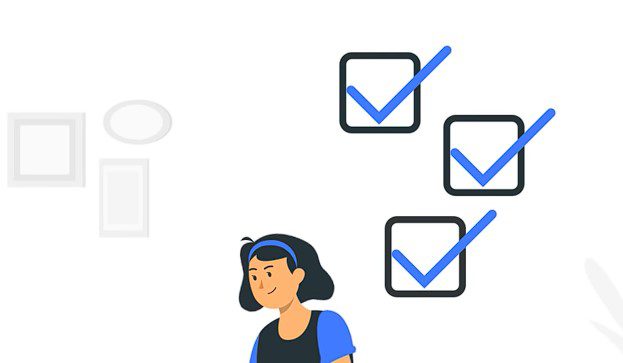What is student engagement? Well, picture this: a classroom filled with students, all actively participating in discussions, eagerly raising their hands to answer questions, and collaborating on group projects.
This is student engagement, a crucial element in the educational journey that can make or break a student’s academic success. In today’s rapidly evolving world, where technology and information are constantly shaping the way we learn, fostering student engagement has become more important than ever before.
Gone are the days when education was confined to textbooks and lectures alone. Students today crave a dynamic and interactive learning experience that ignites their curiosity and fuels their desire to explore. The traditional model of passive learning, where students passively absorb information, has given way to a more progressive approach that emphasizes active engagement.
But what exactly does student engagement look like in practice? It goes beyond mere classroom activities; it involves creating an inclusive and supportive environment where students feel safe to voice their opinions, ask questions, and challenge conventional wisdom. It means incorporating various teaching strategies that cater to different learning styles and interests, ensuring that every student has the opportunity to shine.
So, let’s essay on this journey together, where student engagement takes center stage.

What Is Student Engagement And Why Is It Important
So, what is student engagement mean? It can be comprehensively understood as the measure of a student’s active interest, genuine curiosity, and deep involvement in the multifaceted journey of their educational experience. It encompasses the extent to which students wholeheartedly invest themselves in the process of acquiring knowledge, cultivating skills, and assimilating new perspectives. By embodying a holistic approach, student engagement encapsulates both the cognitive and affective dimensions of a student’s participation in their educational endeavors. Interesting article about: Student Debt.
Fundamentally, engaged students exhibit an enthusiastic receptiveness to the educational material, actively seeking to comprehend and internalize the subject matter at hand. Their innate curiosity serves as a driving force, compelling them to explore ideas, ask probing questions, and delve into the intricacies of the learning process. They embrace their educational pursuits as avenues for personal growth, demonstrating a willingness to invest time and effort to achieve a deeper understanding.
A key characteristic of engaged students is their inherent motivation, which propels them to surpass surface-level learning and delve into the realm of critical thinking. They cultivate an analytical mindset, challenging preconceived notions, evaluating evidence, and formulating independent conclusions. This heightened level of cognitive engagement not only enhances their comprehension and retention of information but also equips them with invaluable skills for problem-solving, decision-making, and intellectual agility.
But why is student engagement so important? Because it serves as a cornerstone for effective education and plays a pivotal role in shaping students’ academic, personal, and professional development. Here are several compelling reasons why student engagement holds such significance:
- Enhanced Learning Outcomes: Active student engagement fosters a deeper understanding of the subject matter and promotes critical thinking skills. When students are actively involved in their learning process, they are more likely to retain information, apply concepts to real-world scenarios, and develop a genuine passion for knowledge acquisition.
- Improved Academic Performance: Engaged students are more motivated to succeed academically. They exhibit higher levels of concentration, participate actively in class discussions, and willingly seek additional resources to supplement their learning. Consequently, their academic performance tends to be significantly better than those who are disengaged.
- Increased Retention Rates: Student engagement contributes to higher retention rates within educational institutions. Engaged students feel a sense of belonging, develop strong connections with peers and teachers, and are less likely to drop out. They perceive education as a valuable and relevant experience, fostering a commitment to completing their studies.
- Positive Classroom Environment: A classroom characterized by active student engagement creates a positive and inclusive learning environment. Engaged students collaborate with their peers, share diverse perspectives, and constructively challenge ideas, leading to enriched discussions and enhanced overall learning experiences for everyone involved.
- Personal Growth and Development: Student engagement goes beyond academic achievements; it nurtures personal growth and development. Engaged students have opportunities to explore their interests, talents, and strengths, allowing them to develop a sense of identity, self-confidence, and resilience. They are more likely to set and pursue ambitious goals, both inside and outside the classroom.
- Preparation for the Workforce: Active student engagement prepares individuals for the demands of the professional world. It cultivates essential skills such as effective communication, teamwork, problem-solving, and adaptability. Engaged students develop a strong work ethic and a thirst for continuous learning, positioning themselves for success in their future careers.
- Social and Emotional Well-being: Engaging students in the learning process contributes to their overall social and emotional well-being. Meaningful interactions with peers and teachers create a support network, fostering positive relationships and a sense of belonging. Engaged students are more likely to experience reduced stress levels, increased self-esteem, and improved mental health.
- Lifelong Learning: Student engagement instills a love for learning that extends far beyond the classroom. Engaged students develop a growth mindset, embracing challenges and seeking opportunities for self-improvement. They are more likely to continue their education, pursue lifelong learning endeavors, and stay informed about advancements in their chosen fields.
- Societal Impact: Engaged students possess the knowledge, skills, and motivation to make meaningful contributions to society. They become active citizens who are aware of social issues, take initiatives to drive positive change, and engage in community service. By empowering students through engagement, we cultivate future leaders and catalysts for progress. Interesting article about: Student Portal.

What is Student Engagement in the Classroom
Student engagement in the classroom is all about creating a dynamic learning environment where students feel motivated to participate, ask questions, and collaborate with their peers. This can be achieved through a variety of teaching strategies, such as:
Implementing Active Learning Techniques:
Active learning techniques encompass a range of pedagogical strategies that require students to actively participate in the learning process. By engaging in hands-on activities, discussions, and problem-solving exercises, students become active participants rather than passive recipients of information. Group work, case studies, debates, and simulations are some examples of these techniques. Through such involvement, students can develop a deeper understanding of the subject matter while also experiencing increased engagement.
Incorporating Multimedia and Technology:
The integration of multimedia elements and technology within the classroom setting has the potential to significantly enhance student engagement. Various tools, such as videos, interactive presentations, online resources, and educational apps, can capture students’ attention and facilitate the comprehension of complex concepts. Additionally, technology-based instruments like clicker systems or online discussion boards can encourage active participation and collaboration among students, further augmenting their engagement.
Creating a Supportive and Inclusive Learning Environment:
The establishment of a supportive and inclusive learning environment catalyzes student engagement. Such an environment is characterized by a sense of safety, value, and support, enabling students to thrive academically. Teachers play a pivotal role in achieving this by setting clear expectations and rules, promoting respectful communication, and creating opportunities for every student to contribute and share their ideas. Embracing diversity and implementing inclusive teaching practices further nurture a sense of belonging, motivating students to actively engage and participate. Useful article about: Student Universe Platform.
Providing Real-World Relevance:
Demonstrating the real-world relevance of the subject matter holds paramount importance in cultivating student engagement. By establishing connections between theoretical concepts and practical applications, educators can help students recognize the value and significance of what they are learning. Organizing guest speaker sessions, field trips, or inviting industry professionals to share their experiences are effective methods of illustrating the broader applications of the subject matter. Such initiatives stimulate students’ curiosity and engender a deeper level of engagement.
Personalizing Learning Experiences:
Acknowledging the uniqueness of each student, encompassing their strengths, interests, and learning styles, is integral to fostering engagement. Employing differentiated instruction and providing opportunities for students to pursue their interests and passions can enhance their motivation and investment in the learning process. Tailoring assignments, projects, and assessments to align with students’ abilities and preferences fosters a sense of ownership and actively promotes their engagement in academic pursuits.
Encouraging Collaboration and Peer Interaction:
Collaborative learning experiences serve as a catalyst for student engagement by fostering teamwork, communication skills, and active participation. Activities such as group projects, discussions, and peer feedback sessions provide valuable opportunities for students to learn from one another, exchange ideas, and build relationships. By simulating real-world scenarios where teamwork and cooperation are essential, collaborative activities not only promote engagement but also equip students with skills necessary for their future endeavors.
Providing Timely and Constructive Feedback:
The provision of timely and constructive feedback plays a pivotal role in sustaining student engagement. By offering feedback that is specific, actionable, and supportive, teachers enable students to understand their progress and identify areas for improvement. This feedback can be delivered through various means, including written comments, one-on-one discussions, or self-assessment tools. By gaining a clear understanding of their strengths and areas of growth, students are motivated to stay engaged and continue striving for academic excellence. Useful article about: Active Listening Skills.

What is Student Engagement in Higher Education
So what is student engagement in college? In college, student engagement takes on a whole new level of importance. With more freedom and responsibility, students must take charge of their learning and actively engage with their coursework to succeed. This includes:
- Participating in class discussions: Engaging in meaningful conversations with professors and peers can deepen understanding and promote critical thinking.
- Joining clubs and organizations: Extracurricular activities can help students develop leadership skills, network with like-minded individuals, and explore their passions.
- Seeking internships and research opportunities: Real-world experiences can provide valuable insights into potential career paths and help students apply their knowledge in practical settings.
- Actively participating in group projects: Collaborative assignments provide students with opportunities to work closely with their peers, fostering teamwork, communication, and problem-solving skills. Actively contributing to group discussions and sharing diverse perspectives can broaden one’s understanding of the subject matter.
- Attending office hours and seeking academic support: Engaging with professors during their office hours demonstrates a commitment to learning and allows students to seek clarification on challenging concepts. Taking advantage of academic support resources, such as tutoring services or study groups, can further enhance understanding and academic performance.
- Engaging in undergraduate research: Participating in research projects within their field of study enables students to delve deeper into specific topics, develop critical thinking skills, and gain hands-on experience in their chosen discipline. Engaging in research also provides opportunities to collaborate with faculty mentors and contribute to the advancement of knowledge in the respective field.
- Exploring study abroad programs: Immersing oneself in a different cultural and academic environment through study abroad programs offers a unique opportunity for personal growth, global awareness, and cross-cultural understanding. Engaging with diverse perspectives and experiencing new educational methodologies can broaden students’ horizons and enhance their overall college experience.
- Taking leadership roles in student organizations: Assuming leadership positions within clubs, associations, or student government allows students to develop essential leadership and organizational skills. These roles provide opportunities to engage with the campus community, foster connections, and make a positive impact on campus life. Find out all the information about: Student Beans.
What is Student Engagement in Online Learning
In online learning, it’s up to the students to take charge of their academic progress. They need to step up and be proactive by actively participating in various aspects of the learning process. Attending virtual classes is just the beginning – they should also dive into meaningful discussions, and contribute ideas, insights, and perspectives. By doing so, students can improve their understanding of the subject, develop critical thinking skills, and take ownership of their educational journey.
In addition, the virtual environment requires students to cultivate collaborative skills. Working on group projects and collaborating with others helps them improve their interpersonal and communication abilities. By actively participating in these endeavors, students can benefit from shared knowledge, diverse perspectives, and collective problem-solving. This collaborative approach creates an environment that promotes overall growth, fostering individual development and building a vibrant intellectual community.
To succeed in digital learning, students should embrace interactive activities that offer hands-on experiences. Virtual simulations, interactive exercises, and multimedia resources are all designed to complement traditional teaching methods. By actively engaging with these resources, students can enhance their understanding of complex concepts, reinforce their learning outcomes, and broaden their intellectual horizons.

What is Student Engagement Strategies: Tools for Success
To foster student engagement, educators must employ a variety of strategies tailored to their student’s needs and learning styles. Some effective engagement strategies include:
- Provocative Presentations: Infusing your presentations with captivating multimedia elements, such as intriguing videos, stunning images, and mind-boggling interactive quizzes, will leave your students in awe and craving more knowledge.
- Dynamic Discussions: Get those gears turning in your students’ heads by encouraging vibrant group discussions. Assigning roles like the master facilitator or the meticulous note-taker ensures everyone jumps into the fray, fueling an intellectual bonfire.
- Experiential Adventures: Dive headfirst into the realm of experiential learning and watch your students’ eyes widen with excitement. By incorporating hands-on activities, you’ll transform their education into an enthralling journey of exploration and discovery.
- Reality Check: Break down the walls of the classroom and connect the dots between theory and reality. Sharing juicy examples and compelling case studies will leave your students with jaws dropping and minds racing as they witness the practical power of their studies.
- Tech Whiz: Embrace the digital era and wield the mighty sword of technology. By integrating educational apps, online simulations, or virtual reality experiences, you’ll tap into your students’ digital DNA, electrifying their engagement with a spark of innovation.
- Game On: Summon your students’ inner gamers and turn learning into an epic quest. Through the magical art of gamification, rewards, badges, and leaderboards will unleash their competitive spirit, transforming your classroom into a thrilling arena of knowledge conquest.
- Project Pioneers: Embark on a daring voyage into the land of project-based learning. Let your students be the architects of their educational destiny as they tackle real-world projects that demand their problem-solving prowess, research skills, and boundless creativity. With project-based learning, the classroom becomes a vibrant hub of autonomy, teamwork, and deep engagement with the subject matter.
- Assessment Alchemy: Unleash the power of diverse assessment methods, and watch your students shine in unique and extraordinary ways. From captivating presentations and lively debates to captivating portfolios and dazzling multimedia projects, this kaleidoscope of assessment options caters to the diverse learning styles of your students, keeping them fully engaged and eager to demonstrate their knowledge and skills.
- Personalization Power: Unlock the secret to student motivation and engagement through the magic of personalization and choice. By granting your students the freedom to select topics or assignment formats that align with their passions and interests, you empower them with a sense of ownership and autonomy over their learning journey. The result? A classroom brimming with self-motivated and actively engaged learners.
- Community Crusaders: Ignite the fire of social responsibility and relevance within your students by fostering community involvement. Through service-learning projects or collaborations with local organizations, students become active participants in their communities, connecting their learning to real-life contexts.
This transformative experience not only cultivates a sense of empathy and compassion but also propels student engagement to new heights as they witness the positive impact of their education beyond the classroom walls. Be the first to know about: Student Housing.

What is Student Engagement Theory: The Science Behind Successful Learning
Student engagement theory refers to the degree of interest, attention, and involvement students demonstrate in their learning activities. It goes beyond mere participation and encompasses the emotional, behavioral, and cognitive aspects of student learning. Engaged students are motivated, curious, and actively seek opportunities to learn and explore. They are more likely to persist in the face of challenges, develop a deep understanding of the subject matter, and achieve higher levels of academic success.
Key Components of Student Engagement
Theory Student engagement theory consists of several interconnected components that contribute to effective learning experiences:
a. Behavioral Engagement: This component focuses on observable behaviors such as attending classes regularly, completing assignments, and actively participating in discussions. Students who exhibit high levels of behavioral engagement demonstrate a sense of responsibility and commitment to their academic work.
b. Emotional Engagement: Emotional engagement relates to students’ affective experiences and their emotional connection to the learning process. Engaged students experience positive emotions such as curiosity, excitement, and interest, which enhance their motivation and willingness to learn.
c. Cognitive Engagement: Cognitive engagement refers to the mental effort and investment students put into their learning. It involves active thinking, critical analysis, problem-solving, and a deep understanding of the subject matter. Engaged students go beyond surface-level memorization and actively seek to make connections and apply their knowledge.
Factors Influencing Student Engagement
Several factors contribute to student engagement. Educators can utilize these factors to create an environment that fosters active and meaningful learning experiences:
a. Autonomy and Choice: Providing students with autonomy and opportunities for decision-making enhances their sense of ownership and investment in their learning. Allowing them to choose topics or project options promotes intrinsic motivation and engagement.
b. Relevance and Authenticity: Connecting learning to real-world contexts and demonstrating the relevance of the subject matter to students’ lives increases their motivation and engagement. Engaging in activities that reflect authentic problems or scenarios can spark curiosity and encourage active participation.
c. Clear Goals and Expectations: Communicating learning goals and expectations helps students understand what is expected of them and provides a sense of direction. This clarity fosters a focused and purposeful approach to learning, leading to higher levels of engagement.
d. Supportive Learning Environment: Creating a supportive and inclusive classroom climate promotes student engagement. Encouraging collaboration, respecting diverse perspectives, and providing constructive feedback foster a sense of belonging and motivation to actively participate.
e. Varied and Interactive Instructional Strategies: Utilizing a range of instructional strategies such as group work, discussions, hands-on activities, and multimedia resources caters to different learning styles and keeps students engaged. Interactive elements provide opportunities for active participation and promote deeper learning.
Implications for Teaching and Learning
Understanding student engagement theory has several implications for educators:
a. Creating Engaging Learning Experiences: By incorporating elements that foster behavioral, emotional, and cognitive engagement, educators can create learning experiences that captivate students’ interests and promote deep learning.
b. Differentiating Instruction: Recognizing that students have diverse needs and learning styles, educators should employ differentiated instructional strategies to ensure that all students are actively engaged. This may involve providing alternative assignments, scaffolding, or individualized support.
c. Building Relationships: Developing positive relationships with students cultivates a supportive and trusting learning environment. When students feel valued and connected to their teachers, they are more likely to engage actively in the learning process.
d. Providing Timely and Constructive Feedback: Regular feedback helps students understand their progress and areas for improvement. Specific and constructive feedback promotes a growth mindset, encourages students to reflect on their learning, and enhances their engagement.
e. Promoting Collaboration and Peer Interaction: Collaborative learning activities and peer interactions foster engagement by promoting active participation and social interaction. Group work, discussions, and projects allow students to learn from each other, share ideas, and develop critical thinking skills.
f. Utilizing Technology: Incorporating technology into the learning environment can enhance student engagement. Interactive educational platforms, multimedia resources, and virtual simulations provide opportunities for active learning and promote student motivation and interest. Find out about it here: Student Teaching.

The Benefits of Student Engagement
When students are engaged in their learning, they experience numerous benefits:
a. Improved Academic Performance: Engaged students are more likely to achieve higher grades, demonstrate a deeper understanding of the subject matter, and perform better on assessments. Their active involvement in the learning process facilitates knowledge retention and application.
b. Higher Motivation and Persistence: Engaged students are intrinsically motivated and have a genuine desire to learn. They exhibit a sense of purpose, are more likely to persevere through challenges and demonstrate greater resilience in their academic pursuits.
c. Enhanced Critical Thinking and Problem-Solving Skills: Active engagement promotes critical thinking, analytical skills, and problem-solving abilities. Engaged students are more adept at applying their knowledge to real-world situations and developing innovative solutions.
d. Increased Satisfaction and Well-being: When students feel engaged and connected to their learning, they experience a sense of fulfillment and satisfaction. This positive emotional connection contributes to their overall well-being and promotes a positive attitude toward education.
What Is Student Engagement And Motivation?
Student engagement and motivation go hand in hand. When motivated to learn, students are more likely to be engaged in their coursework and actively participate in class activities. To foster motivation, educators can:
- Set high expectations: Communicate your belief in your students’ abilities and challenge them to reach their full potential.
- Offer choice: Allow students to choose topics, projects, or activities that interest them, fostering a sense of autonomy and ownership over their learning.
- Celebrate progress: Recognize and celebrate students’ achievements, both big and small, to boost their confidence and motivation.
- Provide meaningful and relevant learning experiences: Design lessons and activities that connect to real-world applications and resonate with students’ interests and goals. When students can see the relevance and purpose of their learning, they are more likely to be motivated to engage and excel.
- Foster a supportive and inclusive learning environment: Create a classroom atmosphere where students feel safe, respected, and valued. Encourage collaboration, teamwork, and positive peer interactions. When students feel supported and included, they are more likely to be motivated to actively participate in class discussions and activities.
- Incorporate technology and interactive resources: Utilize educational technology tools, such as interactive apps, online simulations, or multimedia presentations, to make learning more engaging and interactive. Incorporating technology can enhance student motivation by adding variety and interactivity to the learning experience.
- Provide timely and constructive feedback: Regularly provide feedback on students’ progress, highlighting their strengths and areas for improvement. Constructive feedback helps students understand their performance and progress, and it can motivate them to strive for improvement and take ownership of their learning.
- Offer opportunities for creativity and self-expression: Provide students with opportunities to express their creativity and individuality within the learning process. Allow for open-ended projects, presentations, or assignments that allow students to showcase their unique talents and interests. When students have the freedom to express themselves, it can significantly enhance their motivation and engagement in their coursework.
What is an Operational Definition of Student Engagement?
An operational definition of student engagement provides a clear and measurable way to assess the level of engagement in a learning environment. This can include:
- Behavioral indicators: Behavioral indicators refer to observable actions and behaviors that can be used to assess students’ engagement and participation in the learning process. Measures of participation include attendance, class contributions, and completion of assignments. Attendance indicates the extent to which students are physically present in the learning environment, suggesting their commitment to learning and their willingness to engage with the material and activities. Regular attendance is generally considered a positive behavioral indicator, while frequent absences may indicate disengagement or other underlying issues.
- Emotional indicators: Emotional indicators assess students’ feelings and attitudes toward their learning experience. These indicators focus on measuring aspects such as interest, enjoyment, and a sense of belonging. Interest refers to students’ curiosity and enthusiasm for the subject matter. When students express genuine interest, it often indicates a higher level of engagement and motivation, which can lead to deeper learning and better outcomes. Enjoyment reflects students’ positive emotional experiences related to the learning process, suggesting that they find the activities and content personally fulfilling and engaging.
- Cognitive indicators: Cognitive indicators evaluate students’ intellectual investment in the learning process. These indicators focus on assessing critical thinking, problem-solving, and self-reflection skills. Critical thinking involves the ability to analyze information, evaluate arguments, and make reasoned judgments. Students who demonstrate strong critical thinking skills can engage with complex concepts, identify logical fallacies, and formulate informed opinions.
What Is A Student Engagement Plan?
So, what is a student engagement plan? A Student Engagement Plan refers to a structured and purposeful approach aimed at fostering active participation, motivation, and investment in learning among students.
It encompasses a range of strategies, activities, and interventions designed to cultivate meaningful interactions, collaborative learning, and a sense of ownership, ultimately enhancing student achievement and overall educational experience.
Conclusion
Student engagement serves as a fundamental pillar within the realm of education, exerting a profound influence on various facets of the academic journey, including scholastic triumph, intrinsic motivation, and the cultivation of lifelong learning skills.
By comprehending the essence of student engagement and adeptly employing a range of effective strategies to foster its growth, educators possess the capacity to construct dynamic learning environments that foster optimal student development and enable them to realize their utmost capabilities.
Thus, we must harness the inherent potency of student engagement, propelling our students towards triumphant trajectories and paving the way for their unequivocal triumph in the pursuit of knowledge and personal growth.
Questions and Answers
How do you build student engagement?
You need to identify the first steps. Ask open-ended, objective questions about the topic, then see how the respondent reacts and build the next steps of engagement.
What are engagement strategies?
Engagement strategies are targeted, step-by-step actions to attract the attention of students or their peers.
What is student engagement theory?
This theory states that a student can learn better, absorb more information and always be ahead of the rest.
